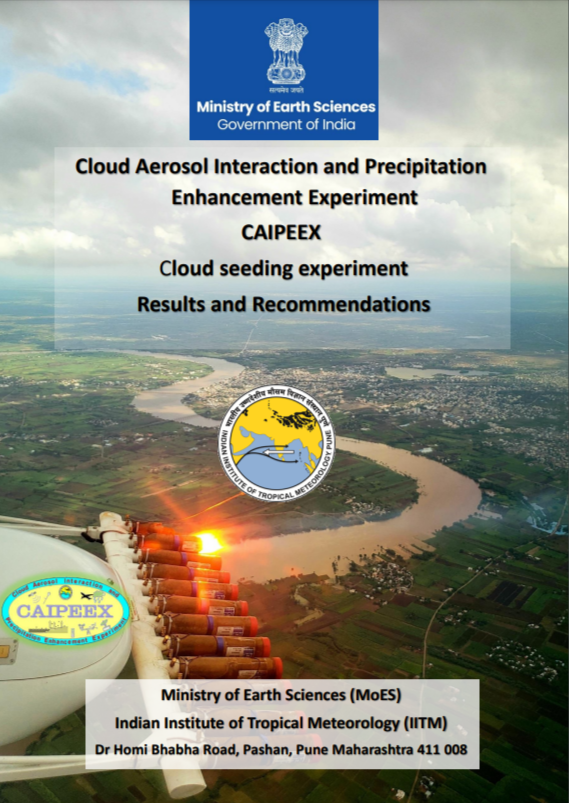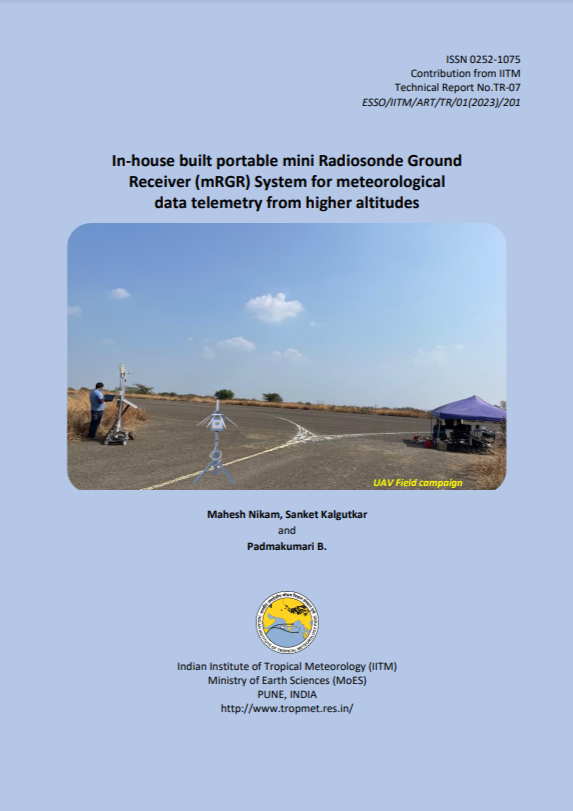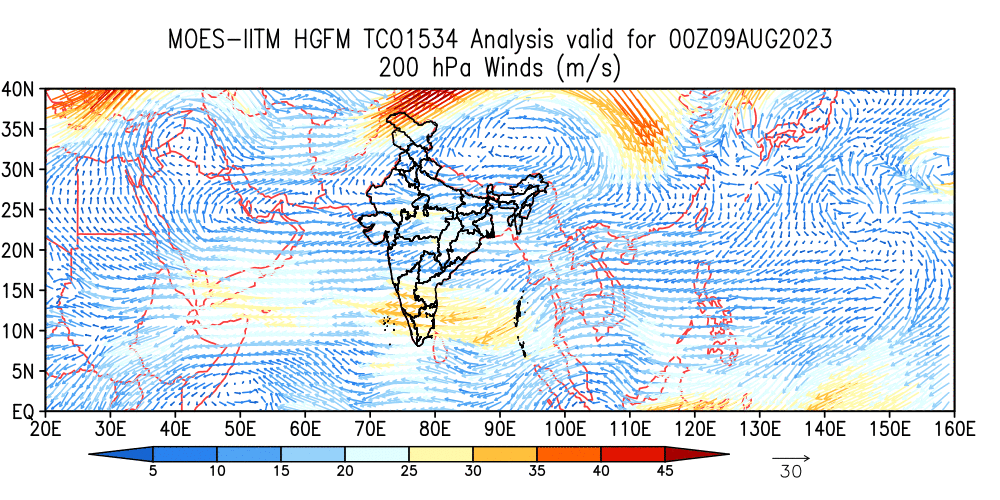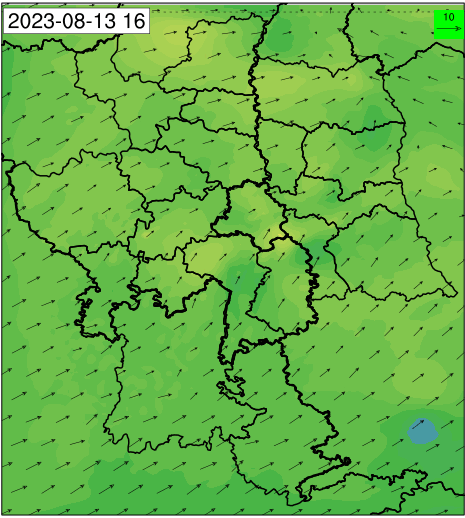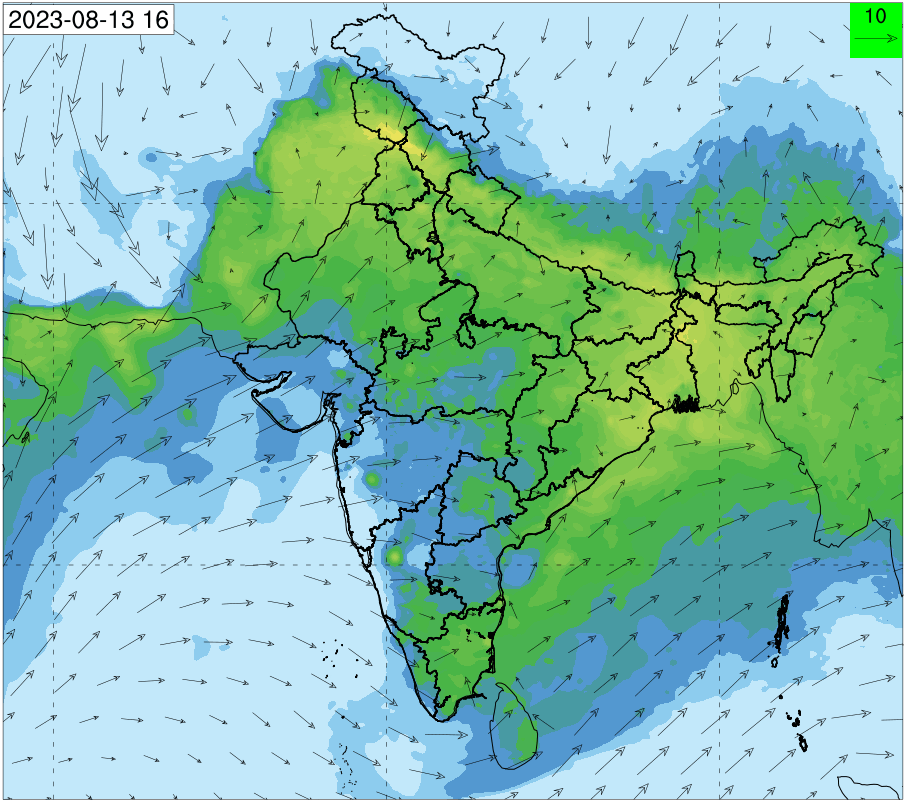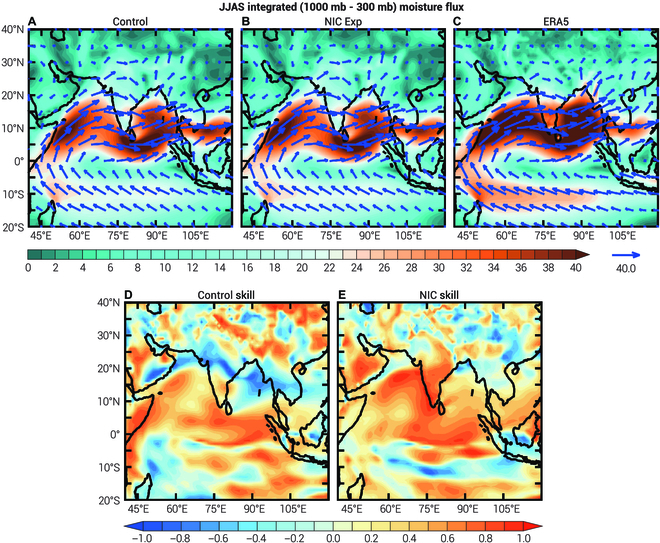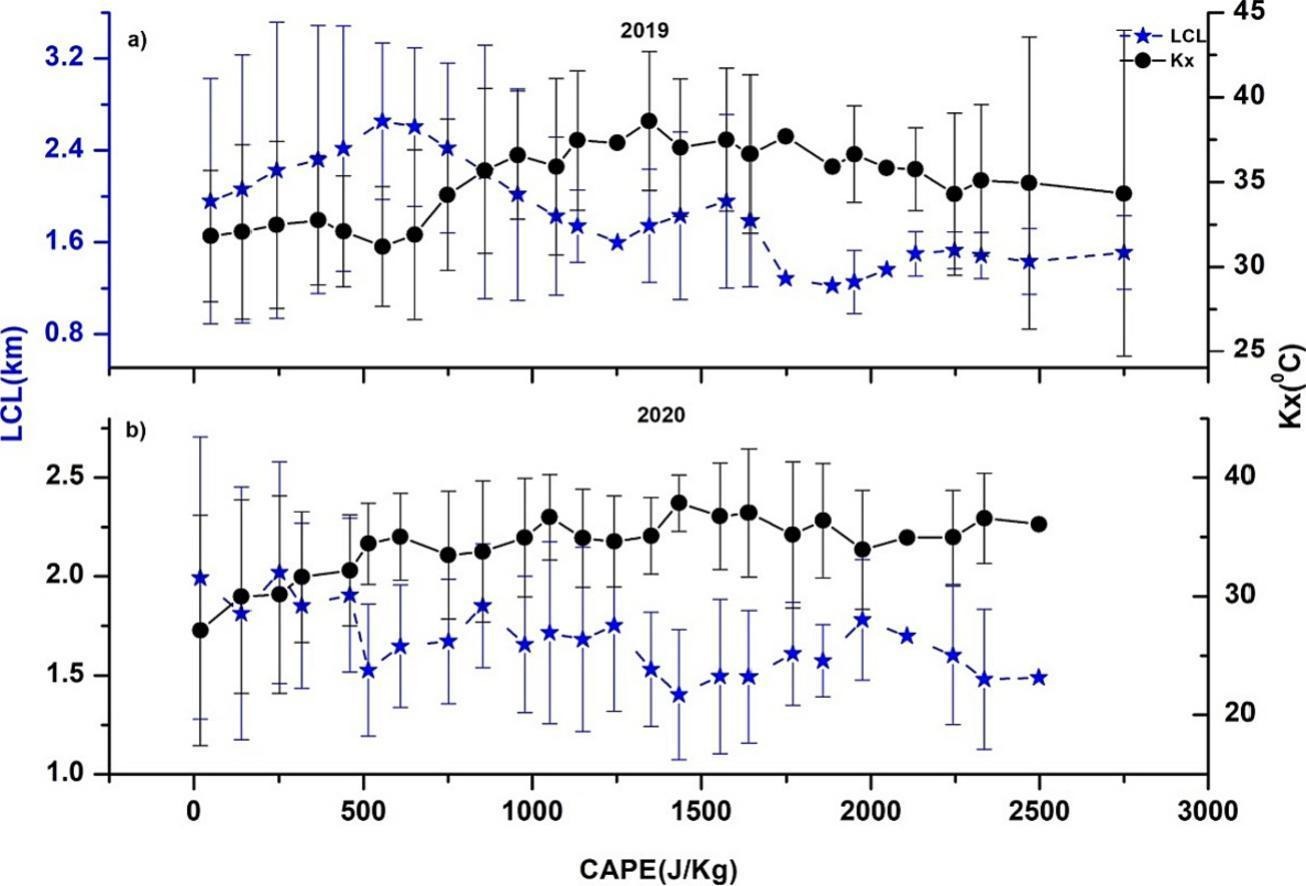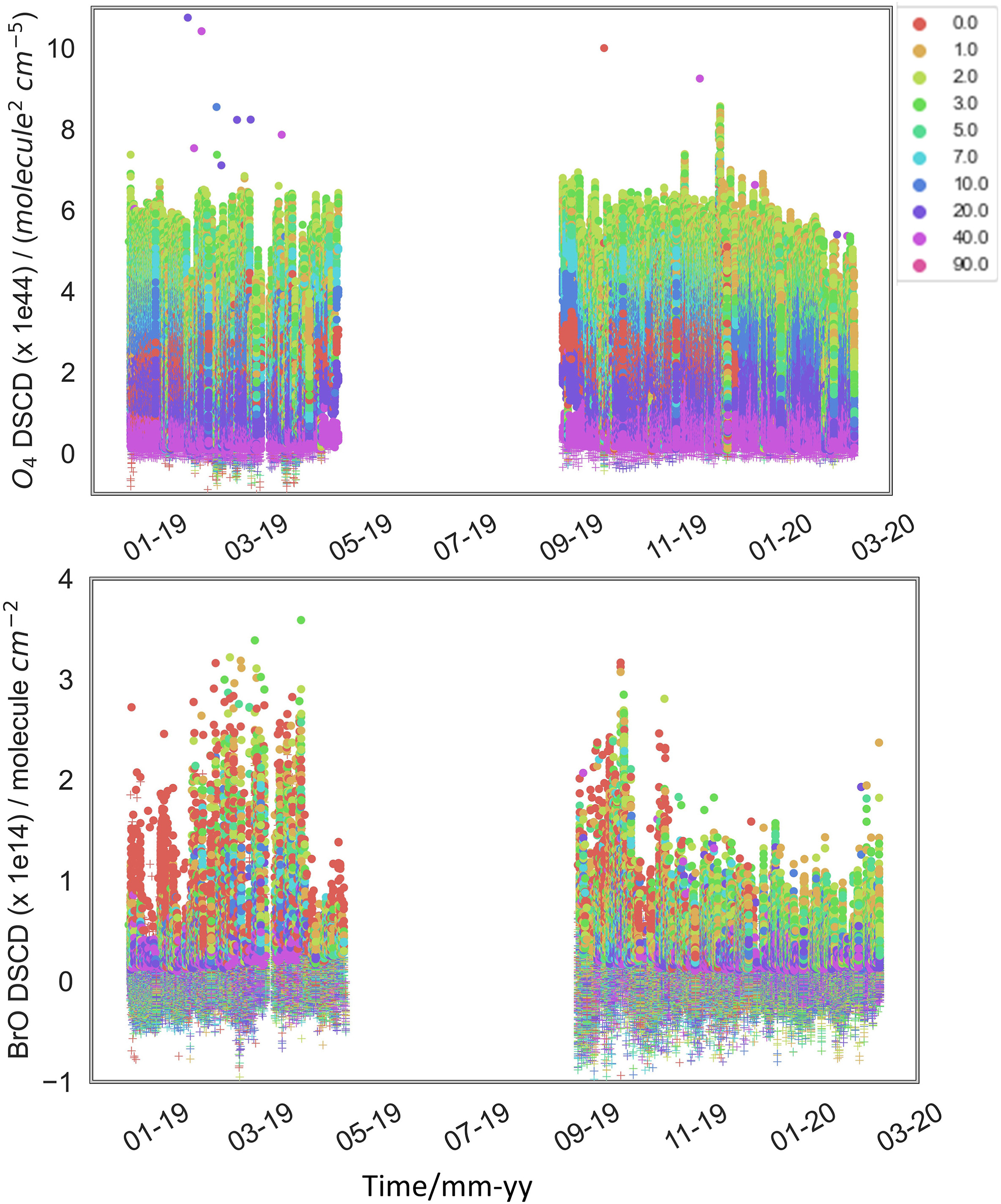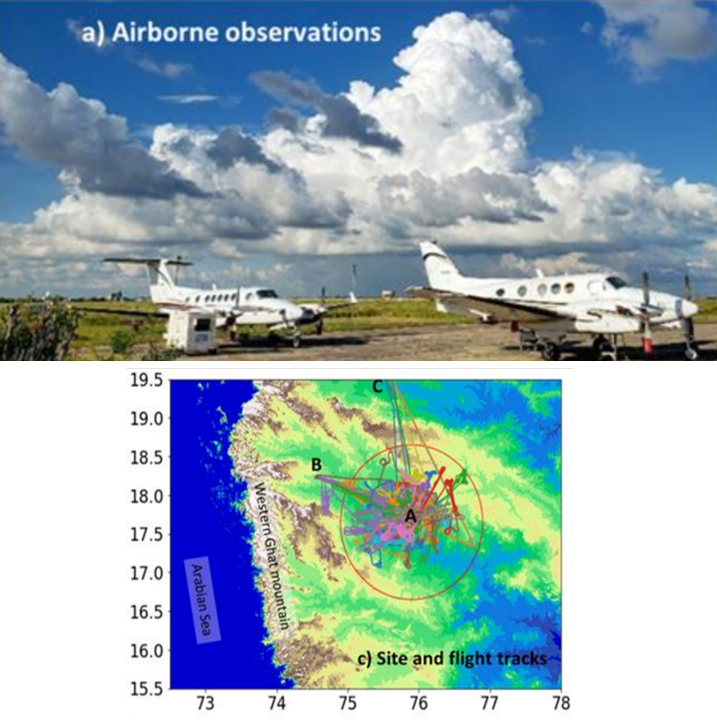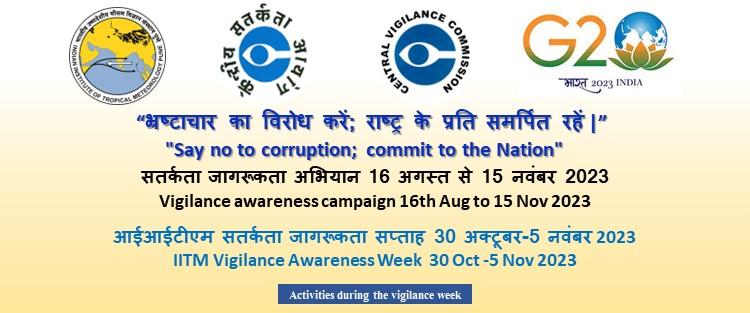Seminars / Lectures
IITM Publication Highlights
Generalized Scaling and Model for Friction in Wall Turbulence
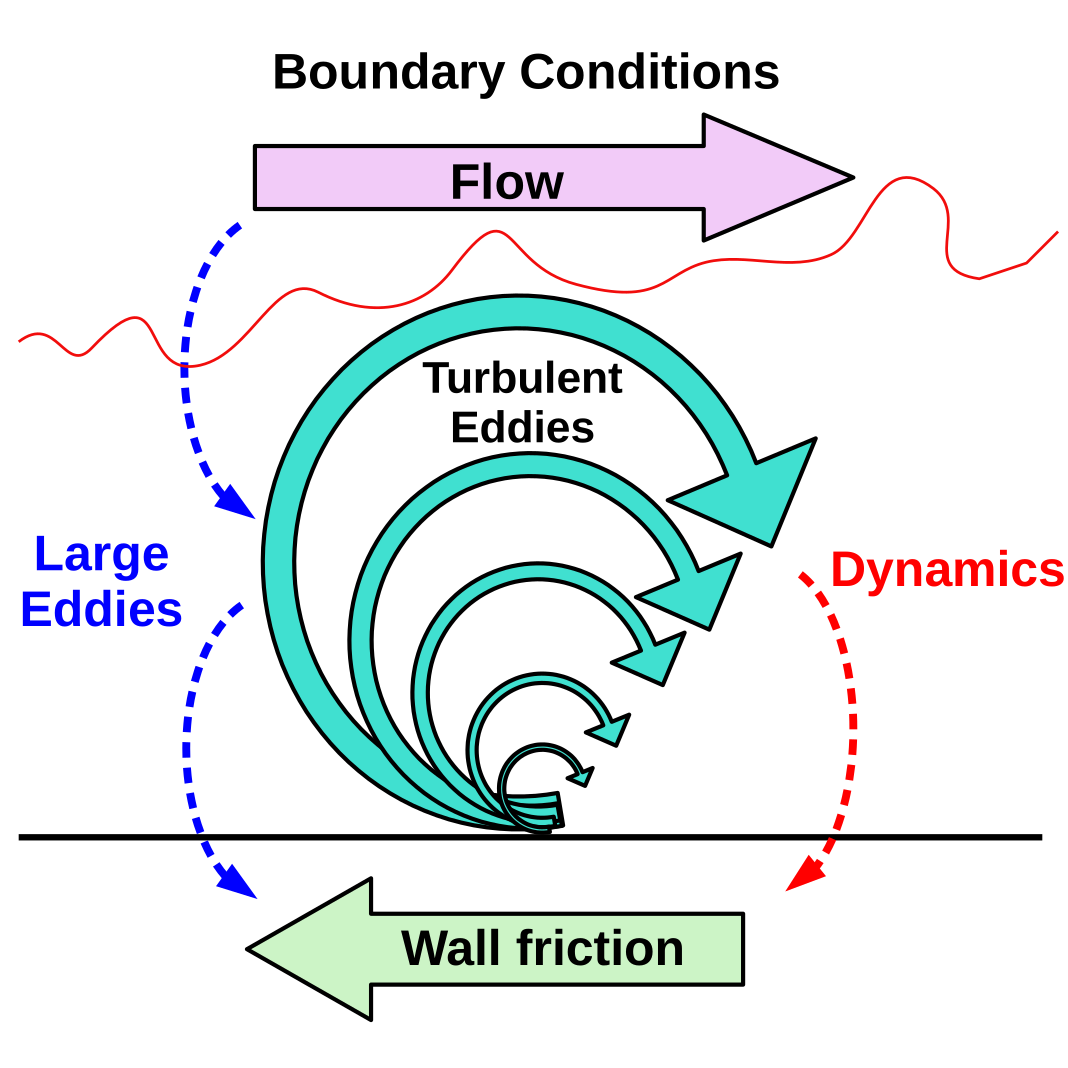 Frictional resistance experienced by a body moving through a fluid depends on size of the body, flow speed and viscosity of the fluid. Dimensionless relationships for each different flow type have been proposed in the literature but they are not derived directly from the governing equations. In this work, we derive such relationship and model directly from governing equations and boundary conditions. As a result, our model is universal and applicable to much broader variety of flows than previously thought of.
Frictional resistance experienced by a body moving through a fluid depends on size of the body, flow speed and viscosity of the fluid. Dimensionless relationships for each different flow type have been proposed in the literature but they are not derived directly from the governing equations. In this work, we derive such relationship and model directly from governing equations and boundary conditions. As a result, our model is universal and applicable to much broader variety of flows than previously thought of.
Dixit S.A., Gupta Abhishek, Choudhary H., Prabhakaran Thara, Physical Review Letters, 132: 014001, January 2024, DOI:10.1103/PhysRevLett.132.014001
Read MoreAmplified drying in South Asian summer monsoon precipitation due to anthropogenic sulfate aerosols
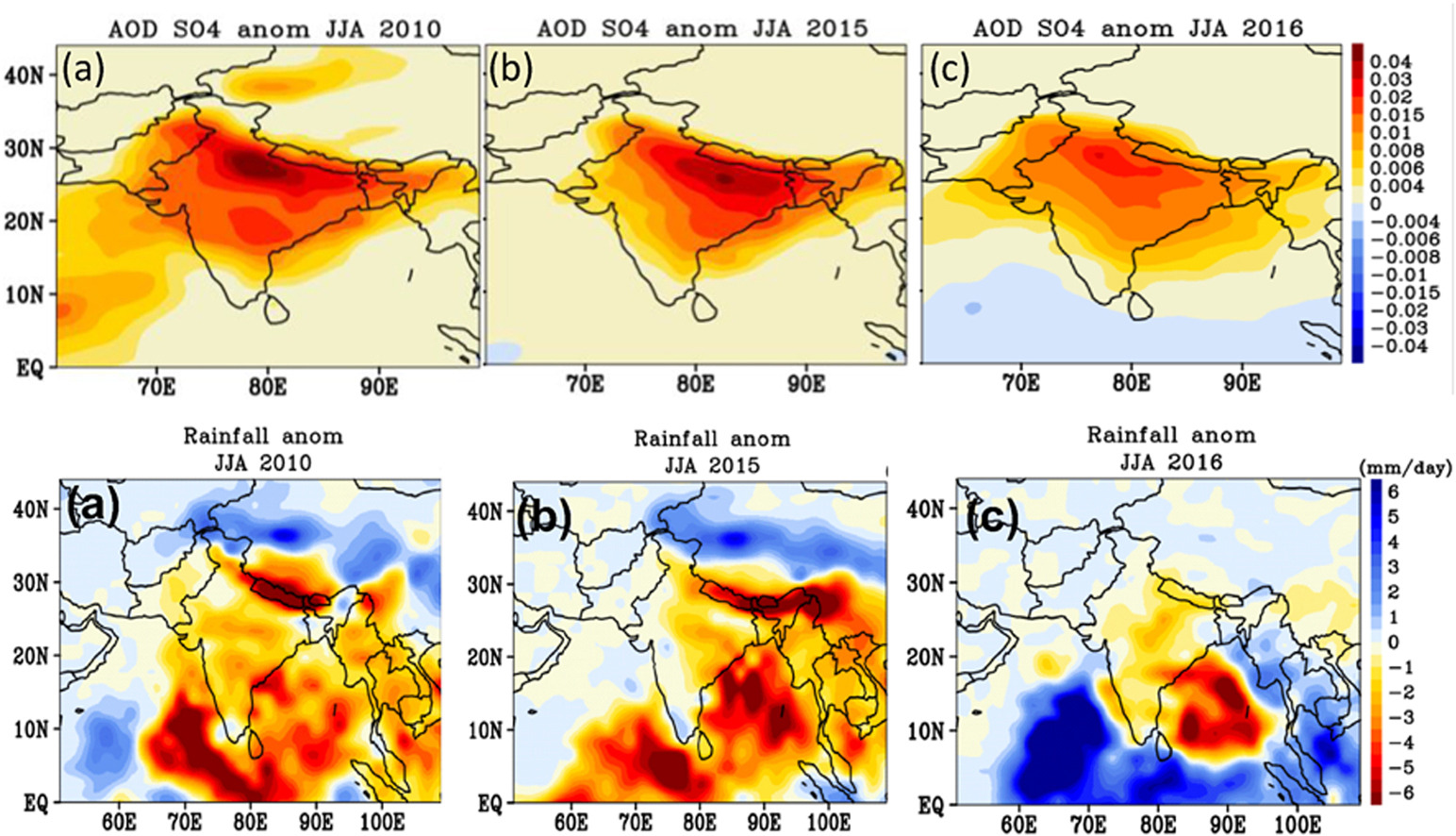 Heavy aerosol loading over India is one of the key factors in modulating the Indian summer monsoon precipitation (ISMP). Using the ECHAM6–HAMMOZ aerosol chemistry-climate model, a few sensitivity experiments were performed to investigate the impact of Asian sulfate emission on Indian Monsoon. Three contrasting monsoon years: (1) 2010 La Niña (excess monsoon), (2) 2015 El Niñ (deficit monsoon) in comparison to (3) normal monsoon 2016. Sensitivity simulations were designed with 48% enhancement in South Asian SO2 emissions based on a trend estimated from Ozone Monitoring Instrument (OMI) satellite observations during 2006–2017. The model simulations showed that sulfate aerosols reduce ISMP by 27.5%–43.3 %, while simulations without sulfate loading enhanced ISMP by 23% in 2010 La Niña and reduction by 35% in 2015 El Niño. Sulfate aerosols loading over India reduce precipitation by aerosol-induced direct and indirect effects by inducing atmospheric cooling, weakening in the convection, and reduction in moisture transport to Indian landmass. This paper emphasizes the necessity of alternate use of energy to reduce sulfate aerosol emissions to solve water issues in South Asia.
Heavy aerosol loading over India is one of the key factors in modulating the Indian summer monsoon precipitation (ISMP). Using the ECHAM6–HAMMOZ aerosol chemistry-climate model, a few sensitivity experiments were performed to investigate the impact of Asian sulfate emission on Indian Monsoon. Three contrasting monsoon years: (1) 2010 La Niña (excess monsoon), (2) 2015 El Niñ (deficit monsoon) in comparison to (3) normal monsoon 2016. Sensitivity simulations were designed with 48% enhancement in South Asian SO2 emissions based on a trend estimated from Ozone Monitoring Instrument (OMI) satellite observations during 2006–2017. The model simulations showed that sulfate aerosols reduce ISMP by 27.5%–43.3 %, while simulations without sulfate loading enhanced ISMP by 23% in 2010 La Niña and reduction by 35% in 2015 El Niño. Sulfate aerosols loading over India reduce precipitation by aerosol-induced direct and indirect effects by inducing atmospheric cooling, weakening in the convection, and reduction in moisture transport to Indian landmass. This paper emphasizes the necessity of alternate use of energy to reduce sulfate aerosol emissions to solve water issues in South Asia.
Fadnavis S., Asutosh A., Chavan P., Thaware R., Tilmes S., Environmental Pollution, 343: 123175, February 2024 , DOI:10.1016/j.envpol.2023.123175, 1-9
Read MoreCCN activation in homogeneous isotropic turbulence: Response to particle characteristics and environmental conditions
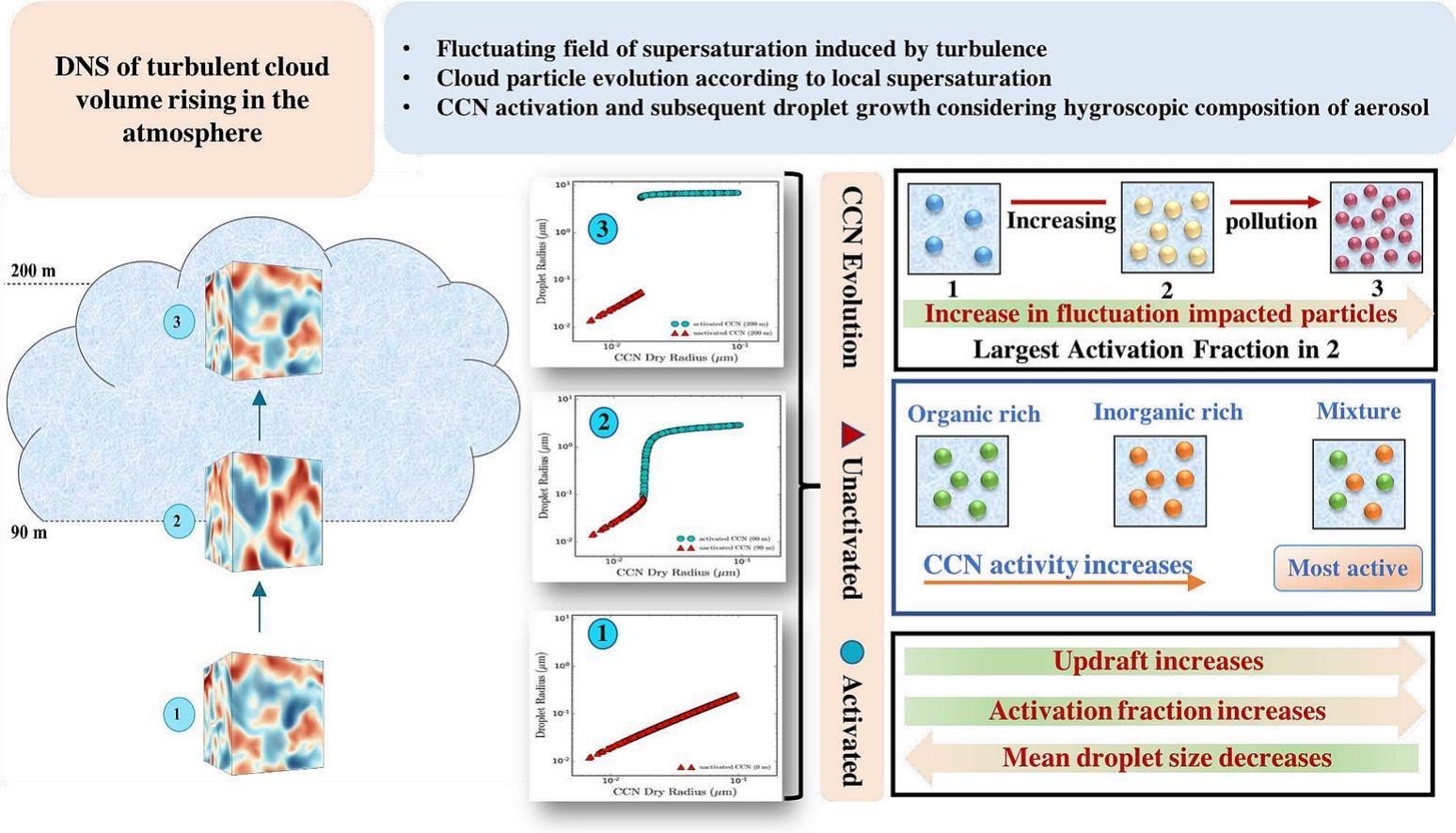 Direct Numerical Simulations (DNS) of particle-laden turbulent cloud volumes have been performed to understand the impact of turbulence fluctuations on CCN activation and cloud droplet evolution. DNS generates highly accurate representations by resolving the smallest turbulence scales and by tracking every single particle in the volume. A pseudo-spectral DNS modified to incorporate microphysics of both unactivated deliquesced aerosol particles and activated CCN by incorporating the hygroscopicity parameter and a modified droplet growth equation based on ĸ-Köhler theory is presented. This is one of the first DNS attempts that consider turbulence interactions right from the activation phase of cloud particles.
Direct Numerical Simulations (DNS) of particle-laden turbulent cloud volumes have been performed to understand the impact of turbulence fluctuations on CCN activation and cloud droplet evolution. DNS generates highly accurate representations by resolving the smallest turbulence scales and by tracking every single particle in the volume. A pseudo-spectral DNS modified to incorporate microphysics of both unactivated deliquesced aerosol particles and activated CCN by incorporating the hygroscopicity parameter and a modified droplet growth equation based on ĸ-Köhler theory is presented. This is one of the first DNS attempts that consider turbulence interactions right from the activation phase of cloud particles.
Thomas L., Kumar Bipin, Zuend A., Hassan-Barthaux D., Rao Suryachandra A., Atmospheric Research, 297: 107095, January 2024, DOI:10.1016/j.atmosres.2023.107095, 1-15
Read MoreMarine heatwaves during the pre-monsoon season and their impact on Chlorophyll-a in the north Indian Ocean in 1982–2021
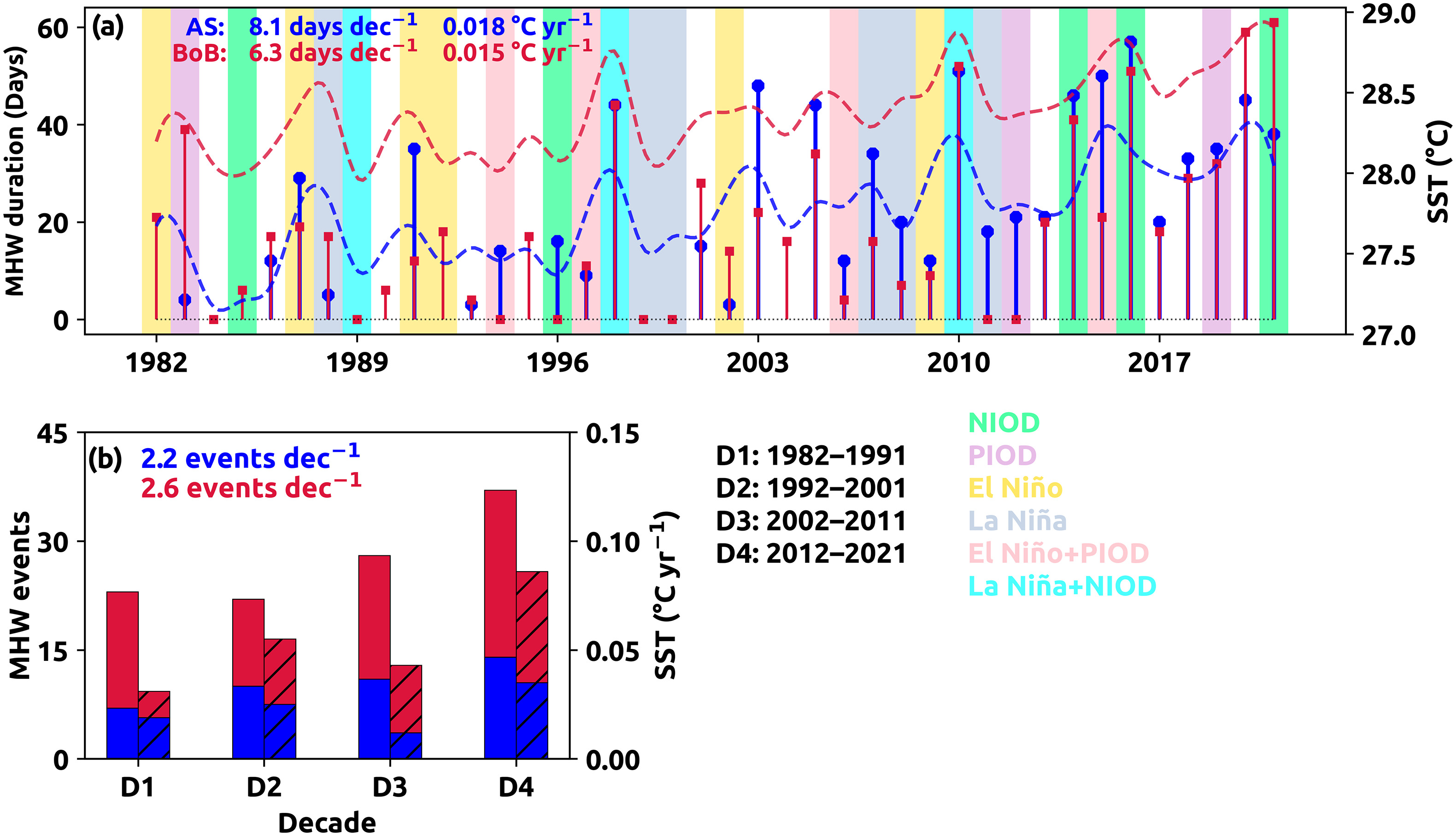 Indian Ocean has been undergoing rapid warming in recent years, which increases the likelihood of Marine heatwave (MHW). MHWs are extreme warm ocean surface conditions in which temperature exceeds the 95th percentile for three or more consecutive days. We investigate MHW events occurred in Arabian Sea (AS) and Bay of Bengal (BoB) during pre-monsoon for 1982–2021 period, their impact on Chlorophyll-a (Chl-a) and net primary productivity (NPP). There were 42 (68) MHW events with a significant trend of 8.1 (6.3) MHW days dec−1 in AS (BoB). There is a distinct decrease in Chl-a concentration associated with MHW, especially in medium and long duration events. In general, AS and BoB have witnessed more frequent and long-lasting MHWs in the 2002–2021 period, which reduce NPP of north Indian Ocean. A decrease in Chl-a and NPP, 10 % in AS and 2 % in BoB, is estimated, but only severe MHWs inflict a notable reduction.
Indian Ocean has been undergoing rapid warming in recent years, which increases the likelihood of Marine heatwave (MHW). MHWs are extreme warm ocean surface conditions in which temperature exceeds the 95th percentile for three or more consecutive days. We investigate MHW events occurred in Arabian Sea (AS) and Bay of Bengal (BoB) during pre-monsoon for 1982–2021 period, their impact on Chlorophyll-a (Chl-a) and net primary productivity (NPP). There were 42 (68) MHW events with a significant trend of 8.1 (6.3) MHW days dec−1 in AS (BoB). There is a distinct decrease in Chl-a concentration associated with MHW, especially in medium and long duration events. In general, AS and BoB have witnessed more frequent and long-lasting MHWs in the 2002–2021 period, which reduce NPP of north Indian Ocean. A decrease in Chl-a and NPP, 10 % in AS and 2 % in BoB, is estimated, but only severe MHWs inflict a notable reduction.
Krishnapriya M.S., Varikoden H., Anjaneyan P., Kuttippurath J., , Marine Pollution Bulletin, 197: 115783, December 2023, DOI:10.1016/j.marpolbul.2023.115783, 1-9
Read MoreNew Publications
Role of Improved Ocean Initial State in the Seasonal Prediction of Indian Summer Monsoon: A Case Study
Pokhrel S., Rahaman H., Saha SK, Chaudhari H., Hazra A., Ravichandran M.,Ocean-Land-Atmosphere Research, 3: 0034, January 2024, DOI:10.34133/olar.0034, 1-21
Association of lightning with LCL, EL, humidity at 850 mb and at 200 mb during various CAPE, over northern India
Lal D.M., Umakanth N., Domkawale M.A. , Gopalakrishnan V., Srivastava M.K., Pawar S.D., Science of the Total Environment, Online, January 2024 , DOI:10.1016/j.scitotenv.2024.169947, 1-12
Year-long ground-based observations of bromine oxide over Bharati Station, Antarctica
Wagh S.P., Joge S.D., Singh S., Mali P., Beirle S., Wagner T., Bucci S., Saiz-Lopez A., Bhawar R., Mahajan A.S., Polar Science, 38: 100977, December 2023, DOI:10.1016/j.polar.2023.100977, 1-11
CAIPEEX - Indian cloud seeding scientific experiment
Prabhakaran Thara, Murugavel P., Konwar M., Malap N., Gayatri K., Dixit S., Samanta S., Chowdhuri S., Bera S., Varghese M., Jaya Rao Y., Sandeep J., Safai P.D., Sahai A.K., Axisa D., Karipot A., Baumgardner D., Werden B., Fortner E., Hibert K., Nair S., Bankar S., Gurnule D., Todekar K., Jose J., Jayachandran V., Soyam P.S., Gupta A., Choudhary H., Aravindhavel A., Kantipudi S.B., Pradeepkumar P., Krishnan R., Nandakumar K., DeCarlo P.F., Worsnop D., Bhat G.S., Rajeevan M., Nanjundiah R., Bulletin of the American Meteorological Society, 104, November 2023, DOI:10.1175/BAMS-D-21-0291.1, E2095–E2120
PDF Publisher LinkIITM Events
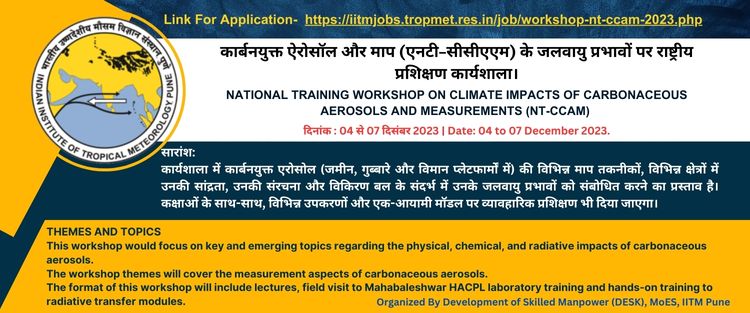
National Training Workshop On Climate impacts of carbonaceous Aerosols and Measurements (NT-CCAM)
(04-07 December 2023)
A 4-day workshop for early career research fellows/Master students on the aspect of climate impact of carbonaceous aerosols mainly focusing on its measurement techniques was organized by DESK, IITM Pune.
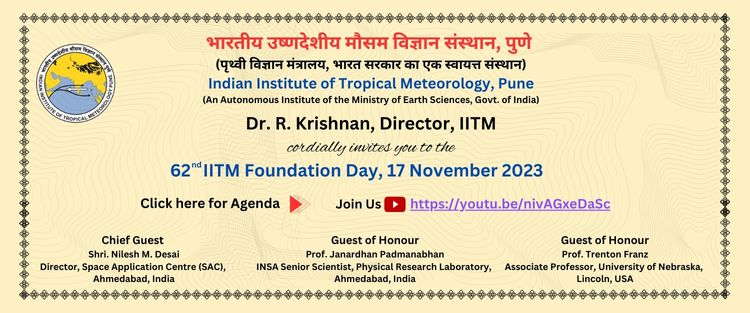
IITM Foundation Day 2023
(17 November 2023)
IITM celebrated its 62nd Foundation Day on 17th November 2023. Shri Nilesh M. Desai, Director, SAC, Ahmedabad was the Chief Guest and Prof. Janardhan Padmanabhan, INSA Senior Scientist, PRL, Ahmedabad and Prof. Trenton Franz, Associate Professor, University of Nebraska, Lincoln, USA were the Guests of Honor on this occasion.

Visit of Hon’ble Minister of Earth Sciences to HACPL
(05 October 2023)
The Hon’ble Cabinet Minister of Earth Sciences, Govt. of India, Shri Kiren Rijiju visited High Altitude Cloud Physics Laboratory (HACPL) at Mahabaleshwar on 5 October 2023 to review the ongoing observational research activities at the lab.

